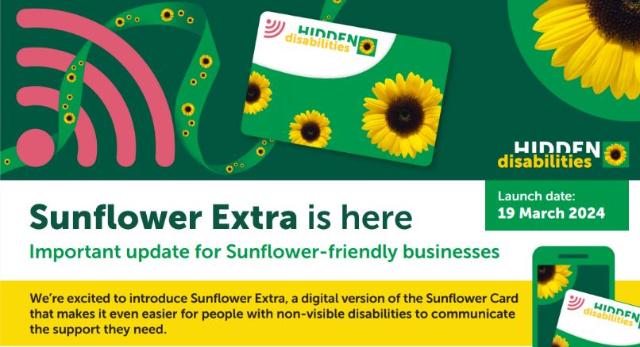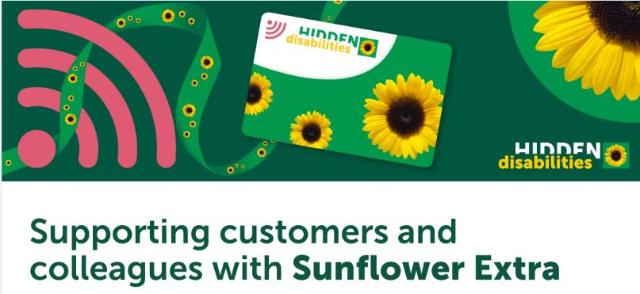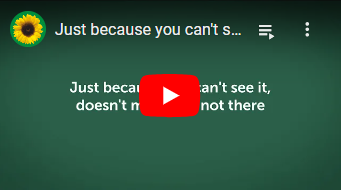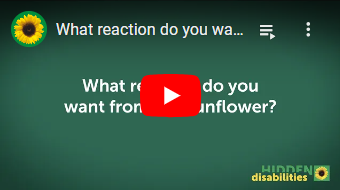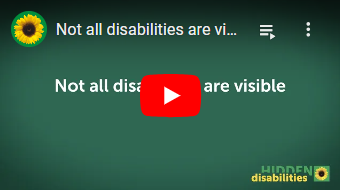-
If someone presents their Sunflower Extra Card, it means they may need extra support or understanding
-
Treat them with patience, kindness, and respect - just as you would any Sunflower wearer
-
The card shows Sunflower icons to show the extra support they may need
Hidden Disabilities Sunflower
The University of Cumbria joins with Hidden Disability Sunflower
The University of Cumbria has joined with Hidden Disabilities Sunflower to provide Sunflower lanyards to encourage inclusivity, acceptance and understanding. The University’s Disability & Neurodivergent Network (DANN) proposed the idea, which was approved by the EDIW Committee, noting that the Sunflower lanyard is in-keeping with our wider Equality, Diversity & Inclusion agenda and continues to drive aspects of disability equality forward at the university, building on the success of being awarded Disability Confident Leader status in October 2022.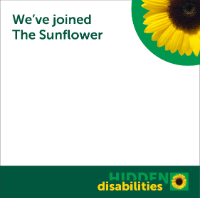
It is a simple tool for you to share that you have a hidden disability voluntarily. Simply by wearing the Sunflower, you’re just letting everyone know that you might need extra help, understanding, or just more time.
From July 2024 you can acquire a free Sunflower lanyard from the university library on any of our campuses.
You do not and will not be asked to disclose your personal circumstances or provide any proof of hidden disability. This is a conscious decision, as it is appreciated that some circumstances can result in the additional challenges of receiving a timely and formal diagnosis, as well as wanting to avoid any level of disability policing or people having to share personal details.
Why is this important?
Hidden Disabilities Sunflower supports people with a non-visible disability, making the invisible, visible and helps them attain the understanding, patience and assistance needed when going about their daily lives.
Globally 1 in 6 of us live with a disability and of those, it is estimated that up to 80% are living with a non-visible disability. That is over 1 billion people.
What disability is not visible?
While some of us experience a disability that is visible, many of us have a non-visible disability that is not immediately apparent to others. These can be temporary, situational or permanent. They can be neurological, cognitive and neurodevelopmental as well as physical, visual, auditory and including sensory and processing difficulties. They also include respiratory, rare diseases and chronic conditions such as asthma, diabetes.
As diverse as these conditions are, so are your individual access needs and the barriers you face in your daily life. So you can opt to wear the Sunflower to discreetly be seen in shops, at work, on transport, or in public spaces.
Source: What is a hidden disability? (hdsunflower.com)
Sunflower Extra
-250x250.jpeg) Sunflower Extra is a new digital version of the traditional Sunflower Card. With a simple tap on a phone, it opens a personalised support page, letting staff understand how to assist each individual Sunflower wearer without the need for lengthy explanations.
Sunflower Extra is a new digital version of the traditional Sunflower Card. With a simple tap on a phone, it opens a personalised support page, letting staff understand how to assist each individual Sunflower wearer without the need for lengthy explanations.
- Instant and discreet: customers can easily share the support they need with a simple tap
- No app needed: Works on most smartphones without requiring any downloads
Fully Sunflower wearer-controlled: they choose what information to share.
To access the short explainer animation, FAQs and more, you can visit Sunflower Extra resources.
A one-page guide to icon examples that you encounter can be accessed Hidden Sunflower Icons .
Click the images below for downloadable one-page summary and quick staff guide. Further details on how to support a Sunflower Extra user can be found in four easy steps noted below.
For further information about the Hidden Sunflower Disabilities, please watch the following videos.
Hidden Disabilities Sunflower Video Content
How the Disability team can help
If you have a disability or learning difference (hidden or otherwise) see how the Disability team can help you during your time at University.

